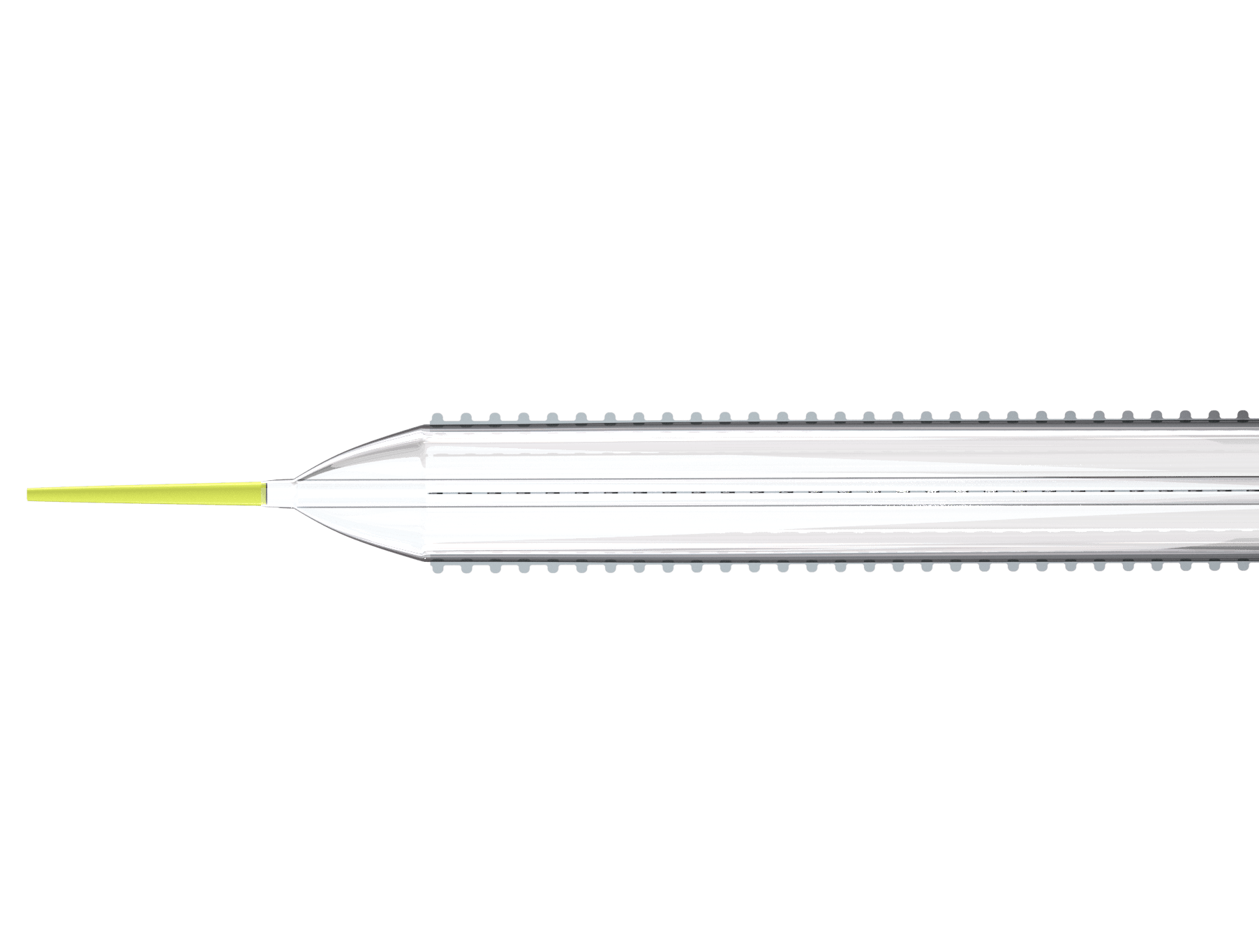
Cagent Vascular, a developer of technology for vessel dilatation in cardiovascular interventions, has announced positive results from the first-in-human PRELUDE study of the company’s percutaneous transluminal angioplasty (PTA) balloon catheter.
Principal invesitagor Andrew Holden (Auckland, New Zealand) presented 30-day and preliminary six-month results using the FDA 510(k) cleared Serranator Alto PTA Serration Balloon Catheter at the Leipzig Interventional Course (LINC; 30 January–2 February 2018, Leipzig, Germany).
The PRELUDE study is a prospective, single-arm, multicentre feasibility study designed to show safety and efficacy of the Serranator Alto used in critical lesions in the superficial femoral artery (SFA) and/or popliteal arteries. The study enrolled 25 subjects at centres in New Zealand and Europe.
“The fascinating part of the trial is that although we had patients, by definition, who were excluded with severe calcification, there was a significant core lab adjudicated group of persons who had lesions with moderate to severe calcification. We could achieve luminal gain to nominal using very low pressures in that subgroup which tells us that this is something quite different from plain balloon angioplasty. Not only being able to dilate these vessels to nominal, which is an achievement on its own, but to do it without a significant incidence of dissection is an achievement. Although the numbers are small this is a really encouraging sign that the serration mechanism of action is a very different way of treating the artery”, Holden said.
The Serranator device has four external metal serrated strips embedded on a semi-compliant balloon. The serration technology is designed to create multiple longitudinal lines of interrupted micro-serrations along the arterial surface to aid arterial expansion. The serrations are responsive to the balloon’s energy, enabling predictable and controlled lumen expansion along the lines. The device received FDA 510(k) clearance and CE marking in 2017.
The primary objective of the study was technical feasibility of using the Serranator Alto in critical SFA or popliteal artery lesions. The secondary objective was the feasibility of using optical coherence tomography and/or intravascular ultrasound in a sub-set (n=10) of subjects to evaluate the presence of serrations. A reported 80% (n=20) of lesions treated were in the SFA, while 56% of lesions treated had moderate to severe calcification, and 32% were chronic total occlusions. The pre-diameter stenosis was 87.6% with a final diameter stenosis of 22.7% using just the Serranator device. The mean lumen gain was 3.45mm in the severe group (n=7) requiring just 8.57 ATM of maximum pressure vs 3.33mm in the none to moderate group (n=18) using only 7.67 ATM. There were no flow limiting dissections and only one bailout stent (4%). All subjects who underwent intravascular ultrasound or optical coherence tomography showed a serration effect as analysed by the core lab. There was 100% patency at 30 days as assessed by duplex ultrasound and 100% freedom from target lesion revascularisation at 30 days and six months.
“In this current era of increasing vessel complexity and economic pricing pressures, treatments need to be effective but not complex. The Serranator is positioned to be the off-the-shelf, ‘workhorse’ solution for SFA and popliteal treatment both for the inpatient and outpatient settings,” says Carol A Burns, president and CEO. “We believe these results are a positive signal that the same mechanism of action will work for the treatment of critical limb ischaemia where there is an even greater unmet need for a device like ours.”
Co-founder and chief medical officer Peter Schneider comments, “The catheter’s inherent flexibility and low-profile design, along with its enhanced pushability specific to the below-the-knee device, are highly desired attributes for the challenging treatment of diseased infrapopliteal arteries. We expect to begin the PRELUDE-BTK study later this year.”












